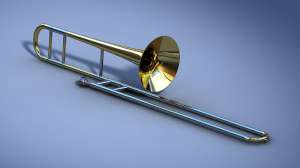When compared to the complexities of the mechanics of other instruments, maintenance and repair of the slide trombone is often overlooked. Having a slide that glides quickly and smoothly is of paramount importance to the enjoyment and development of young trombonists. Being able to make minor repairs and to show how to keep a slide properly lubricated and maintained is an essential part of being a good teacher of the instrument.
Proper Slide Lubrication

Almost every beginner model trombone now ships with a bottle of slide oil yet the majority of collegiate trombone instructors agree that oil is inferior to lubricants such as slide creams or Slide O' Mix. College instructors such as Robert Kehle of Pittsburg State University likewise recommend staying away from using furniture polishes as the product will build up on the slide over time. When moving an instrument over to a non-oil lubricant make certain that the slides (both inner and outer) are well cleaned prior to applying the new lubricant. If possible students should use a trombone cleaning rod to properly clean and dry the inside of the slide.
Fixing Dents and Slide Alignment Problems
Aside from poor lubrication another cause of slow, gritty slide movement is a pair of slides that are misaligned (or dented). If a slide is clicking or gripping only in one place then a dent should be suspected. Move the slide until it begins to grip then look at the outer slide in the area where the inner slide ends. Many times you will see a small dent or will notice that the outer slide has been deformed in some way (perhaps by being stepped on and flattened slightly). If this is the case you can use a basic dent removal tool (Kehle suggests the Ferree's products) or take the slide to a local repair shop.
If neither lubrication nor dents are the cause of a slow slide another culprit is that of a misaligned slide. To diagnose and fix minor slide misalignment problems pull the outer slide all the way to the end of the inner. As you put the two pieces together look to see if the ends of the tubes line up perfectly. If the inner slides are bent inward or outward you may be able to use slight pressure on the inner tubes to move them back into alignment. Grab the inner slide at the handles and gently push or pull the inner tubes until they are parallel again. Be careful with this procedure especially if there is only one hand brace as excessive pressure may break the solder joints.
Having a trombone slide that moves like glass and feels effortless to move is the goal here. Having a slide that is in good working order can make a world of difference in inspiring a young trombonist's career.
An edited version of this column originally appeared in the October 2009 issue of Teaching Music Magazine and is provided here by the original author with approval from NAfME.

